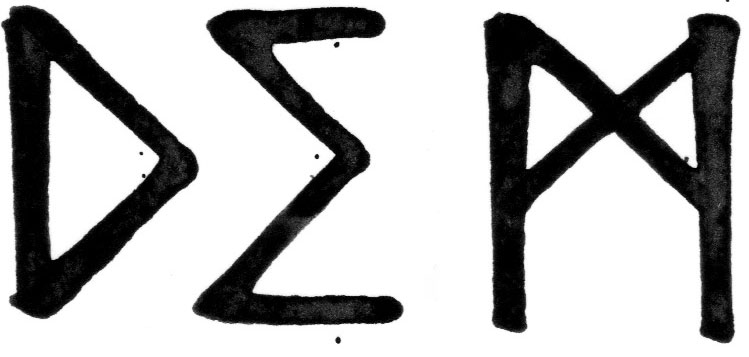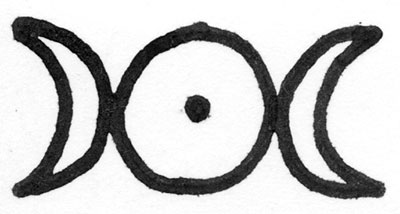PANTA REI - DEM & SETH MORLEY (2014)
ITA
Panta Rei si apre su Pantalica, la più grande necropoli d'Europa, testimonianza della vita e delle civiltà esistenti in Sicilia prima dei Greci e in epoca bizantina. Si tratta di una vera e propria fortezza naturale, sulla cui parete rocciosa vennero scavati più di 5.000 sepolcri. La difficile accessibilità al sito ricalca il carattere sacrale che gli antichi davano alla vita dopo la morte.
Secondo le antiche civiltà mediterranee l’uomo era composto da tre parti: il corpo fisico, la sua ombra e l’anima. Il corpo fisico dopo la morte era destinato a dissolversi, mentre l’anima poteva raggiungere l’immortalità solo liberandosi della sua ombra, fortemente attaccata a cose, persone e luoghi , così che gli oggetti funerari presenti nella tomba non erano destinati al defunto ma alla sua ombra. Coloro che riuscivano a trascendere la propria ombra, potevano anche liberarsi dal ciclo delle reincarnazioni.
L’anima in Panta Rei indossa una tunica bianca e una maschera zoomorfa, mentre l’ombra porta una maschera nera dipinta e un velo anch’esso nero.
La vita viene rappresentata in forma trittica, ovvero seguendo attraverso tre vite differenti il percorso “karmico” di un’anima, che secondo il ciclo nascita-morte-rinascita arriva al suo miglior stadio che si conclude con il distacco dell’anima dalla sua ombra.
I protagonisti delle “tre vite” portano sul capo lo stesso disco dorato, che rappresenta l’unicità dell’anima da loro incarnata.
Dalla necropoli di Pantalica si affaccia” la prima vita “in cui si compie la prima esperienza dell’anima che scopre la materia e incontra la propria ombra.
Poi l’anima si riveste di un corpo di donna, che durante un rito nuziale indossa un velo rosso, chiaro riferimento al culto di Sant’Agata, patrona di Catania, ma anche simbolo della fertilità della terra e dell’amore carnale che nutrono l’ombra e la legano a persone, cose e luoghi. Viene poi mostrato il trapasso, il meraviglioso viaggio che trascina il corpo fisico all’aldilà, all’inconoscibile.
Il terzo e ultimo personaggio rappresenta l’apice del percorso “karmico” di distacco dell’anima dalla sua ombra, che si dissolve liberando l’anima e ponendo fine al ciclo di reincarnazioni. Possiamo considerare il terzo personaggio come un iniziato, una sorta di sciamano che mette in pratica il rito di purificazione/iniziazione dell’uomo contemporaneo.
Ancora oggi taluni sciamani asiatici hanno una concezione dell'anima e del mondo simile a quella degli Egizi e degli Etruschi e dividono l'universo in 3 mondi: inferiore (acquatico e oscuro), mondo di mezzo (o dei vivi) e superiore (di entità celesti creatrici).
Occorre riscoprire il senso del sacro che, per millenni, in molteplici forme e contenuti è stato patrimonio vitale di tutte le culture umane. Molti riti di consacrazione, solstiziali, d’iniziazione, funerari, appartenenti al passato sono andati perduti. Il senso del sacro oggi è considerato antiquato, o meglio, superato da una logica materialistica e consumista, tuttavia si avverte un forte bisogno di spiritualità, alimentato dal dilagante deserto interiore mai saziato dallo spasmodico consumo - possesso di beni materiali.
Panta Rei vuole esaltare la riscoperta del mondo interiore e della spiritualità, il rispetto e l’accettazione della vita e della morte, la curiosità per un passato remoto ma pur sempre esemplare costellato di riti e di simboli antichi che possono ancora guidare l’uomo di oggi nella sua ricerca interiore e nella lettura – comprensione della vita e del passato proprio e del mondo.
In Panta Rei, celebre aforisma di Eraclito traducibile in “tutto scorre”, si affronta il tema della reincarnazione, della sua oscura fascinazione, dei suoi antichi rituali, della sua ciclicità e del suo ovvio collante con la vita. La morte è la giovinezza del mondo, essa soltanto assicura il rinnovarsi della vita. La legge della natura è semplice: la vita è esuberanza, contraria all’equilibrio e alla stabilità. E’ un movimento tumultuoso che esplode e poi si spegne. La sua esplosione perpetua è possibile ad una sola condizione: che gli organismi vissuti cedano il posto a nuovi organismi che entrano nella danza con forze nuove. Tutto esige in noi che la morte ci distrugga. Ciò che ci turba è la sua conoscenza, che gli animali non conoscono.
Panta Rei è un cortometraggio del 2014 realizzato da Dem e Seth Morley durante una residenza di tre settimane in Sicilia e prodotto da Ritmo, ambientato a Catania, Pantalica e Valle dell’Anapo, e sugli scenari lavici dei Crateri Silvestri del monte Etna, le aree boschive che circondano il grande leccio secolare nei pressi di Milo. Le musiche sono state realizzate dai Graziella Kriminal.
Cinzia Puggioni
ENG
Panta Rei opens in Pantalica, the largest Necropolis in Europe, evidence of the life and the existence of civilization in Sicily before the Greeks and in the Byzantine era. It is a real natural fortress where more than 5,000 graves were dug in its rock wall. The difficult access to the site mirrors the sacredness that the ancients gave to the afterlife.
According to ancient Mediterranean civilization, man consisted of three parts: the body, its shadow and the soul. The body after death was destined to dissolve, while the soul could achieve immortality only getting rid of its shadow, strongly attached to things, people and places. Therefore the funerary objects found in the tomb were not intended for the deceased but for his shadow. Those who were able to transcend their own shadow could also free themselves from the cycle of reincarnation.
In Panta Rei the soul wears a white tunic and a zoomorphic mask, while the shadow wears a painted black mask and a black veil.
Life is represented in triptych form, or by following the "karmic" path of a soul through three different lives. According to the birth-death-rebirth cycle it reaches its highest level with soul's separation from its shadow. The protagonists of the "three lives" carry on their heads the same golden disk, which represents the uniqueness of the reincarnated soul.
“The first life" appears from the necropolis of Pantalica. The first experience of the soul which discovers the matter and meets its own shadow.
Then the soul takes the shape of a woman wearing a red veil during a wedding ceremony; it refers to the cult of St. Agatha, the Holy patron of Catania and also a symbol of the fertile earth and of carnal love that feeds the shadow and tie it to people, things and places. It is then shown the passing away, the wonderful journey that drags the physical body to the afterlife, to the unknowable. The third and final character is the culmination of soul's "karmic" path of separation from its shadow, which dissolves releasing the soul and ending the cycle of reincarnations.
We can consider the third character as an initiate, a kind of shaman who puts into practice the rite of purification / initiation of the contemporary man.
Even today some Asian shamans have a conception of the soul and of the world similar to that of the Egyptians and Etruscans and they divide the universe into three worlds: the lower (aquatic and obscure), the middle world (or living’s world) and the higher (the celestial entities who create).
It is necessary to rediscover the sense of the sacred that, for millenniums, in multiple forms and contents was vital heritage of all human cultures. Many rites of consecration, solstice, initiation or funeral, belonging to the past have been lost. The sense of the sacred is now considered outdated, or rather it’s been overtaken by a materialistic and consumerist thought. There is a strong need for spirituality which is enhanced by the prevailing inner desert which will never be fed from spasmodic consumption – material possessions.
Panta Rei wants to enhance the rediscovery of the inner world and of spirituality, the respect and the acceptance of life and death, the curiosity about a distant past that is still exemplary. A past full of ancient rites and symbols that can still lead the man of today in his inner exploration and in the reading of his own and of world’s past. Panta Rei, a Heraclitus’ famous aphorism, translated into "everything flows", deals with the theme of reincarnation, its dark fascination, its ancient rituals, its cyclical nature and its obvious tie with life. Death is the youth of the world, it is the only one able to ensures life’s renewal. The law of nature is simple: life is exuberant, contrary to balance and stability. It's a turbulent movement that explodes and fades. This perpetual explosion it’s possible on one condition: organisms that have already lived give way to new organisms that will enter this dance with new forces. Everything inside us wants death to destroy us. Panta Rei is a short film set in Catania, Pantalica, Anapo Valley, the lava landscapes of the Silvestri Craters of Mount Etna and in wooded areas surrounding the large old oak near Milo. It was made in three weeks in Sicily by Dem and Seth Morley in 2014 and produced by Ritmo. Music by Graziella Kriminal.
Cinzia Puggioni









